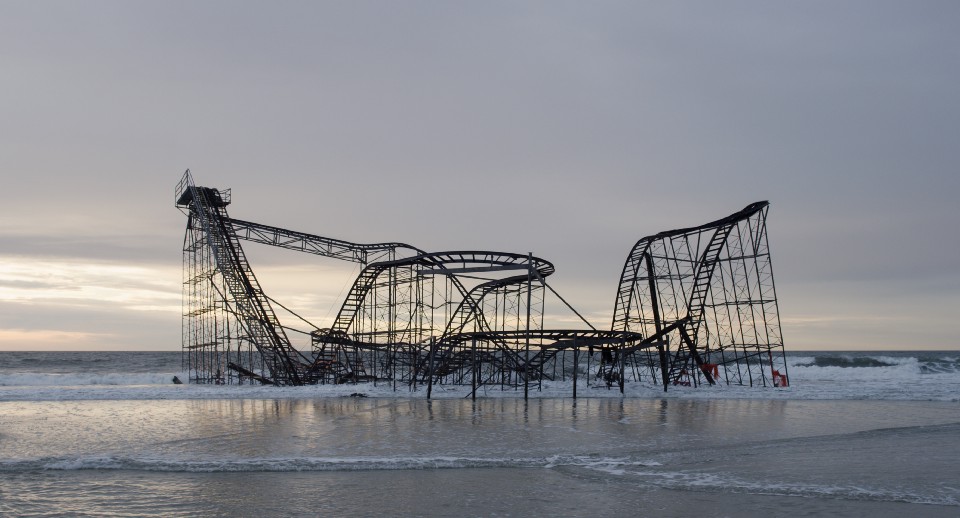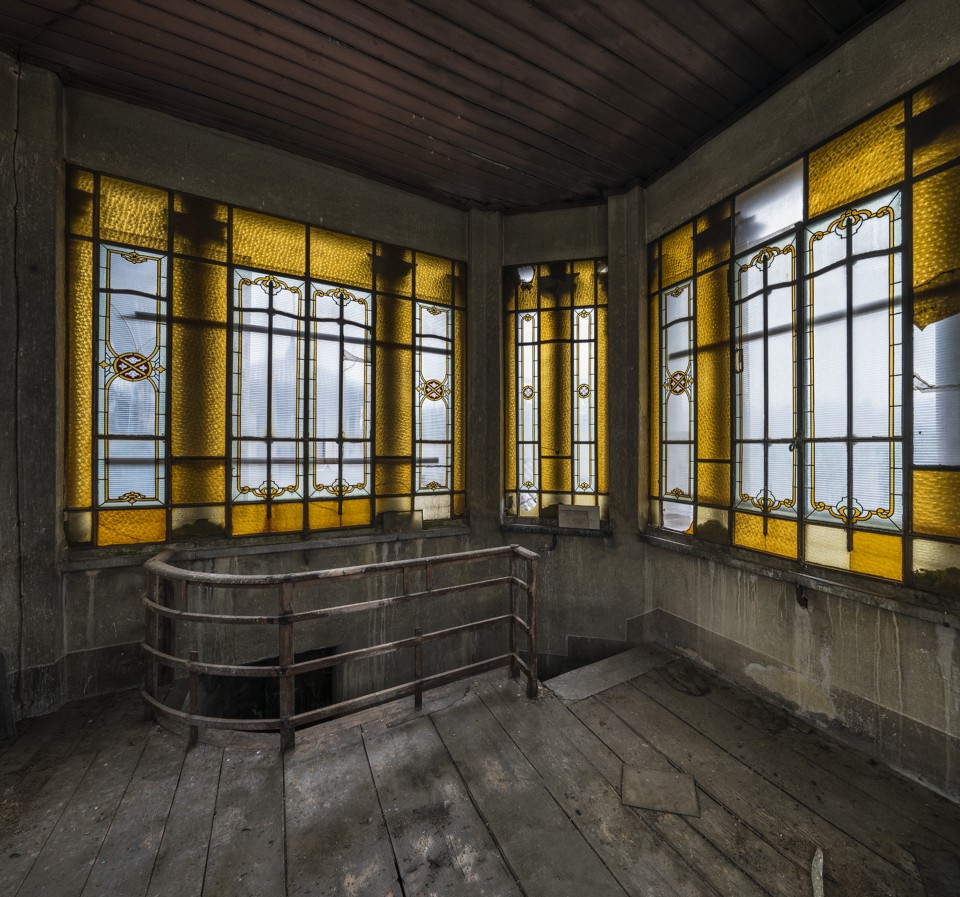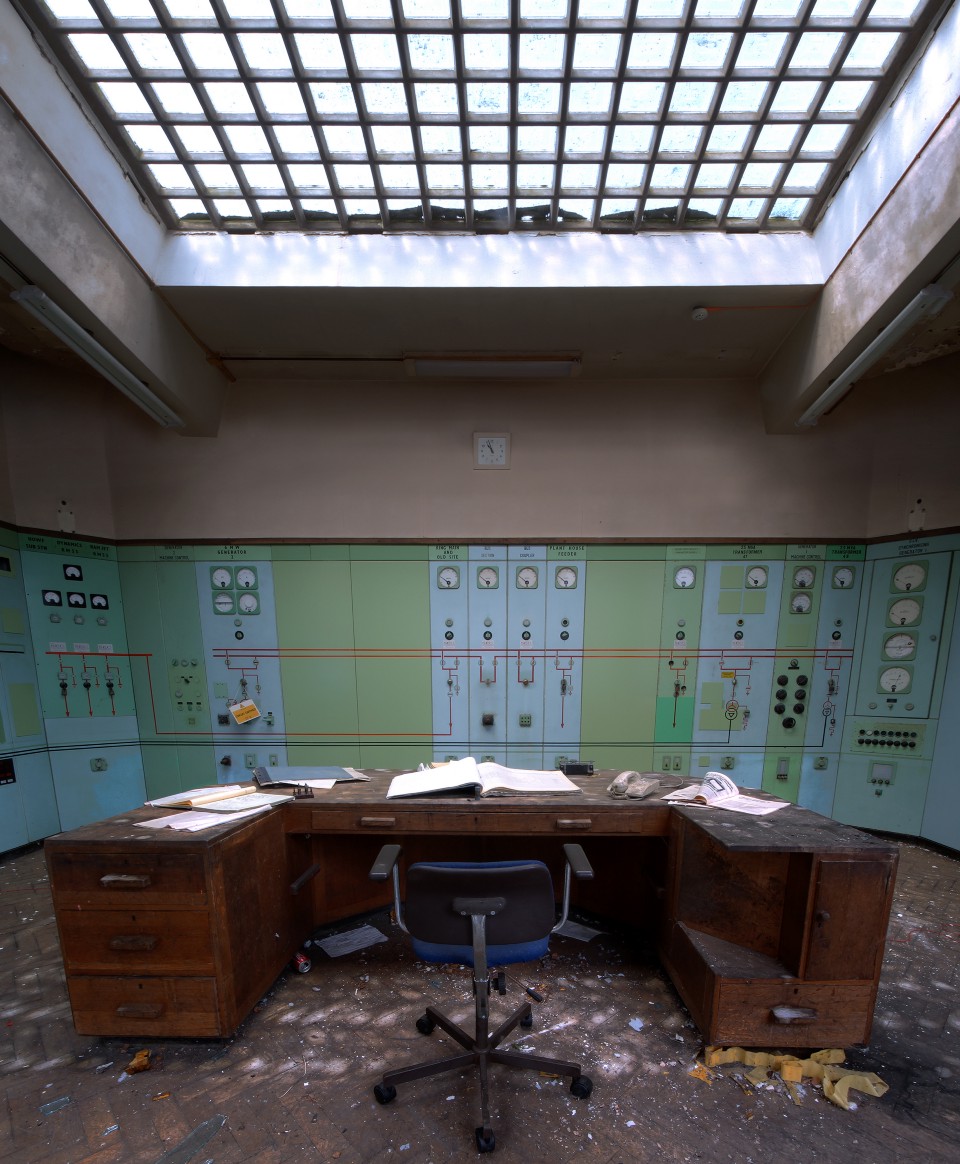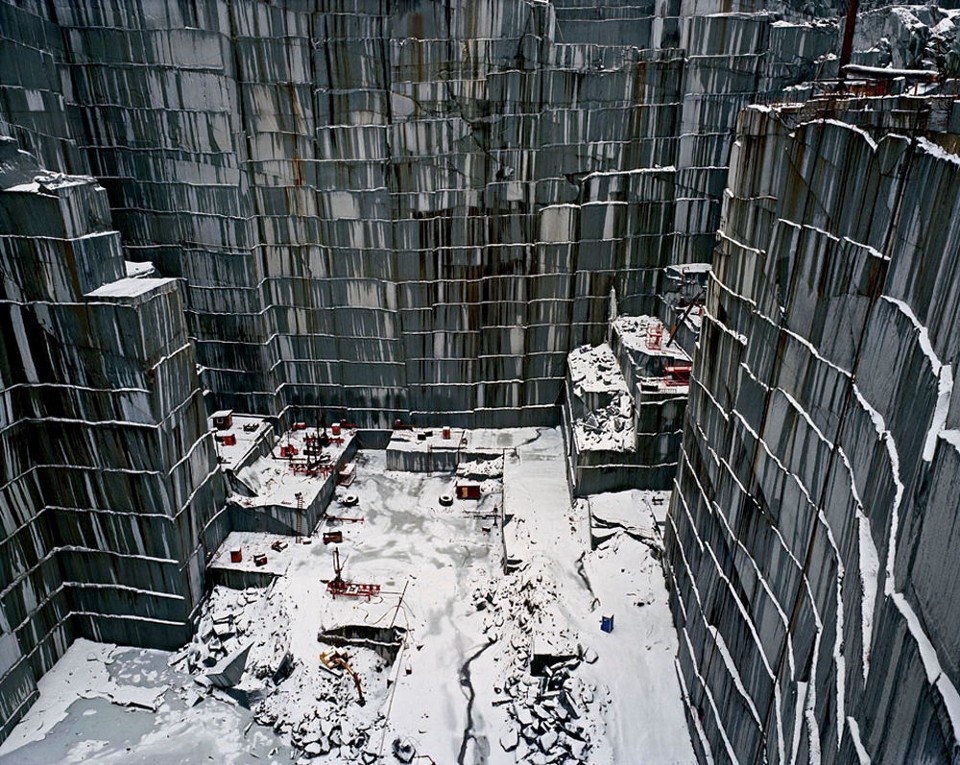In the wake of deindustrialization and climate change, a group of social media-friendly artists are making images of affected areas go viral.
By Matthew King
Are photos of abandoned buildings just morbidly pleasing to look at — or indicative of deeper concern? (Photo: Seth Lawless)
Over the past four years, Austrian filmmaker Nikolaus Geyrhalter has visited over 100 abandoned places around the world for a project about humanity that doesn’t feature a single human being. The result, a film called Homo Sapiens that premiered in the United States in July, conveys a history of social life on the planet through static shots of structures humans have created and left behind. Bicycle racks, train stations, airport lounges, and towering nuclear power plants are all featured, asis the Cycloneroller coaster on Coney Island when it was submerged after Hurricane Sandy. Geyrhalter explains his attraction to the latter image: “It signaled a hazardous age.”
If Geyrhalter’s work has some traditional arthouse trappings (a minimalist aesthetic, hidden meanings), a major audience is currently encountering and sharing his photos, and more like them, online. To date, articles like BuzzFeed’s “The 33 Most Beautiful Abandoned Places in the World” or Distractify’s“The 38 Most Haunting Abandoned Places on Earth,” have amassed millions of views. Collections and slideshows of post-apocalyptic ruins, often featuring Geyrhalter’s striking shot of the Cyclone coaster, have become staples online, covered by publications ranging from the Huffington PosttoThe Atlanticto Vice(which launched a documentary television series called Abandoned in September, hosted by skateboarder Rick McCrank).
While artists have long been enthralled by old ruins, in recent decades a distinct genre of photography has foregrounded their modern counterparts — towns and cities that have been turned upside down by lost industry, titanic storms, and nuclear devastation. Popularized by book-length projects like Camilo José Vergara’s American Ruins (1999), Robert Polidori’s Zones of Exclusion: Pripyat and Chernobyl (2003), and Yves Marchard and Romain Meffre’s The Ruins of Detroit (2010), the genre has inspired a broad range of practitioners, including filmmakers like Geyrhalter, urban explorers like McCrank, heritage enthusiasts, and preservation activists, to produce their own images.
Artistic style and tone varies greatly across these works, but they are alike in one regard: Rather than focus on the gory details of how the world might end, post-apocalyptic art casts its gaze upon the reality of the world that follows catastrophe and persists without human beings, as nature gradually reasserts itself over the architectural remnants of society.
The emerging genre is not without its critics, and many practitioners remain uncertain or divided about what affect — if any — such post-apocalyptic imagery might have on its audiences. But as issues like deindustrialization and climate change rattle the globe, these artists are popularizing the forgotten or unseen places that are already being affected — and potentially mobilizing their massive online audiences to seek solutions.
In Homo Sapiens, consecutive glimpses of man-made worlds devoid of people — bombed-out battlefields, empty slaughterhouses, cavernous nuclear cooling towers, and mountains of plastic waste — evoke a sense of existential vertigo, throwing into question whether the viewer is looking at the past, present, or future. These carefully arranged sequences seem to refer to the environmental and geopolitical hazards of modern industry; the film itself readslike an obituary for humanity.
But Geyrhalter refutes the idea that there is any explicit agenda underlying his work. “I don’t like films that cry out their message or that call for action. That’d be too cheap,” he says. “I wanted to create a film that people could imagine was a world without humans. I wanted them to think: ‘How did we get here?’”

A still from Geyrhalter’s Homo Sapiens. (Photo: Kimstim Films)
Others working in the genre, on the other hand, deliberately use it to raise awareness and promote change. “When I first started posting pictures of these abandoned malls and schools, I was getting a reach beyond my wildest imagination,” says Ohio-based photographer Seph Lawless, who has amassed over 200,ooo Instagram followers with his gloomy portraits of deserted towns and suburbs across the former Rust Belt. “I wanted Americans to see what was happening to their country from the comfort of their suburban homes and their smartphones,” he says.
Lawless’ photos employ an appropriately shouting aesthetic: They’re characterized by the heavy use of shadow imagery, stark contrast between light and dark, and dramatic titles like “Black Friday,” “Dismaland,” and “An American Horror Story.” One of his most recent collections, “Autopsy of America,” includes the sub-title, “Abandoned Everything.” “Art is wasted if you don’t exploit it in a sense,” he says. “It sounds bad, but it’s that powerful of a tool.”
United Kingdom-based photographer Matt Emmett paints similar subjects — abandoned houses, schools, factories, parks, and churches across Western Europe — in a more positive light. His project, Forgotten Heritage, documents the aesthetic character of historically significant structures that have been neglected. With an eye toward preservation, Emmett’s photos makeuse of light, vibrant colors, and perpetually clear skies, evoking a feeling of warmth rather than gloom.

Matt Emmett’s photography is warmer than the majority of his post-apocalyptic peers’. (Photo: Matt Emmett)
“My work has never consciously been political, but I guess there is a kind of passive activism,” he says, referring to thelarge, publicly accessible visual record of endangered sites made available through his pictures and those of fellow heritage photographers. “If my work helps to raise awareness of a building at risk or bring it to the attention of an organization or drive public support for conservation then that is a big bonus.” Emmett has previously documented the U.K.’s National Gas Turbine Establishment, one of the largest centers in the world for gas turbine and aviation research, before the government demolished the site in 2013 to make room for a new business park.
Despite its photographers’ lofty ambitions, critics have voiced skepticism about the sincerity of the genre’s mission. Post-apocalyptic images of abandoned malls and factories have been dismissively called “ruin porn” by the New York Times, the Boston Globe, Guernica, and Jacobin. Labeling these photos as such, art historian Dora Apel wrote in Jacobin last year, “raises the question of whether such photos should be dismissed as voyeuristic and exploitative or whether they make visible what might otherwise remain hidden from history.”
Apel goes on to argue that, by focusing on the beauty of decay, these images may deflect attention away fromthe actual people displaced by deindustrialization — an effect that’s counterproductive to their photographers’ professed cause.
Certainly, photos that are grappling with issues like unemployment could arguably incorporate those who are out of work into the frame. They could make their heavy themes explicit rather than merely a talking point to discuss and promote after the fact. But for bigger, existential problems like climate change or overpopulation, the post-apocalyptic perspective — the planet as stripped of humanity — is particularly impactful, photographers say.
Canadian photographer Edward Burtynsky has spent the last 20 years documenting landscapes around the world that have been drastically altered by large-scale human activity: vast deserts populated by nodding oil rigs, winding rivers of neon-orange nickel tailings, bottomless quarries and toxic shipbreaking sites, and mounds of discarded tires so massive they resemble a sea of coal-colored Cheerios.

(Photo: Matt Emmett)
“By not saying what you should see, the piece can become an inflection point for a more interesting discussion,” Burtynsky says in a voiceover during the 2006 documentary Manufactured Landscapes. “That gets people to think and talk to each other, versus throwing stones, which we’ve tried for 30 years in the environmentalist movement and it hasn’t gotten us very far.”
His photos’ clinical look has enabled him to successfully gain access to many industrial sites normally off-limits to outsiders. In a scene in Manufactured Landscapes that seesBurtynsky attempting to photograph a coal mine near the Port of Tianjin, a Chinese executive lobbies in his aesthetic’s favor. “Even industrial waste, which is kind of like garbage, appears beautiful through his camera,” the executive tells a colleague.
Burtynsky’s unique approach also won him a major platform for discussing his work’s themes: In accepting a TED Prize for his environmental photography, Burtynsky delivered an uplifting acceptance speech that articulated a hope that such images might “shift society’s consciousness about how we live in the world” and “persuade millions to join a global conversation about sustainability.” The video has been viewed over 850,000 times online, and his work is currently on display in over 60 museums around the world.
Some photographers suspect that viewers might be paralyzed by the doomed reality of such depressing portraits.
But there are also limits to what scare tactics can accomplish, and some photographers suspect that viewers might be paralyzed by the doomed reality of such depressing portraits, even ones that are artfully staged.
Chris Jordan experienced this struggle whendocumenting the plastic waste that has consumed the Midway atoll in the Pacific Ocean, where crushed bits of bottle caps, toothbrushes, lighters, and cell phones can be seen poking through the decomposed stomachs of dead albatrosses. “I felt like I walked through the fire [of Dante’s Inferno] but then just burned up in it,” he toldPacific Standard’s Brooke Jarvis last year.
Jordan has since supplemented those horrific images with countervailing glimpses of beauty, such as the ecstatic joy of hatching season on the islands. “I want viewers to feel really full,” he says. “I want them to hold the paradox.”
With little consensus about what effect — if any — post-apocalyptic imagery has hadon its viewership, the debate suggests such photos most often function as a kind of Rorschach test, activating concern for whatever issue is most pressing to the viewer at the time.
For Lawless, the husk of an abandoned shopping mall serves to “raise awareness” about the effects of deindustrialization across the Rust Belt; but the same image also signals the end of a reckless era of consumerism for artists like Geyrhalter and Burtynsky (whose work so carefully documents the collateral damage ofindustrial waste). Meanwhile, critics like Apel see no inherent message in such images of dilapidated food courts and arcades, but rather view those images as emblematic of a corrosive pop culture that veers toward sensationalism. Like so many instances in our post-factual contemporary reality, the details can be interpreted to fit the narrative.

A still from Burtynsky’s Manufactured Landscapes. (Photo: Sundance Channel)
Post-apocalyptic imagery’s core subjects — deindustrialization, over-industrialization, unemployment, pollution, climate change — aren’t going away anytime soon. Global warming is poised to reprogram entire geographic climates in the coming decades, and superstorms will likely ravage more coastal towns and cities. Globalized networks of trade and migration and war will continue to displace more people, feeding into renewed feelings of tribalism that are surging across both developed and developing countries. The quickening pace at which these unprecedented changes are rattling the globe may be reason enough for artists to continue documenting the chaos — which is often far away and hard to discern — confronting the carnage of what we are leaving behind, bearing witness, no matter what message audiences take away from the image.
These chroniclers are, fittingly, keeping busy. For his next project, Burtynsky is following a group of geologists as they search the planet for evidence of the looming “Anthropocene,” a new geological epoch in which human activity has overtaken nature as the primary force shaping the environment, ushering in the sixth mass extinction in the process. Geyrhalter, too, is in the early stages of another project that will take the surface of the Earth as its subject. He recalls how difficult it was to finally put a lid on Homo Sapiens and move onto something else, a seemingly impossible proposition.
“It doesn’t have any natural end,” he says. “You could carry on filming forever.”





